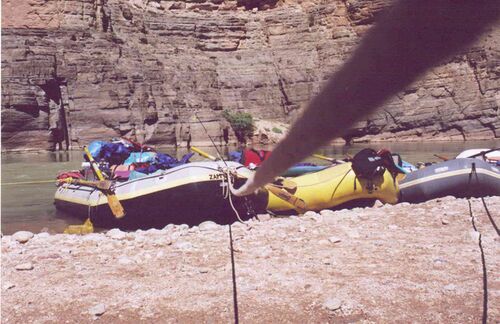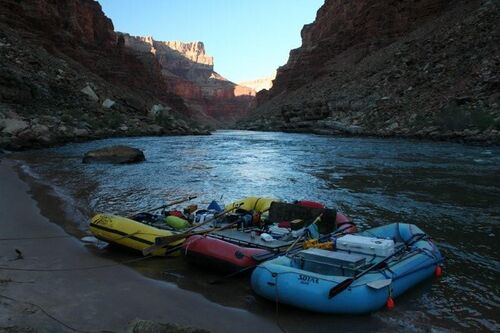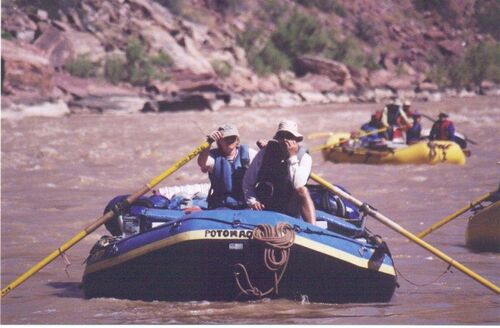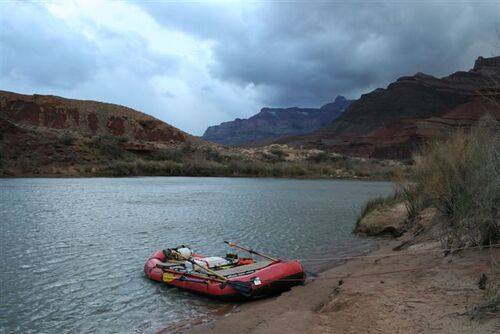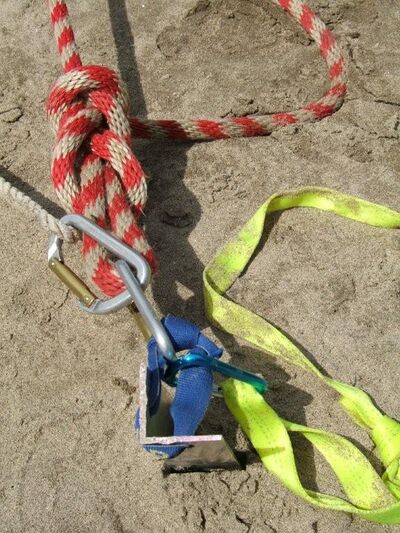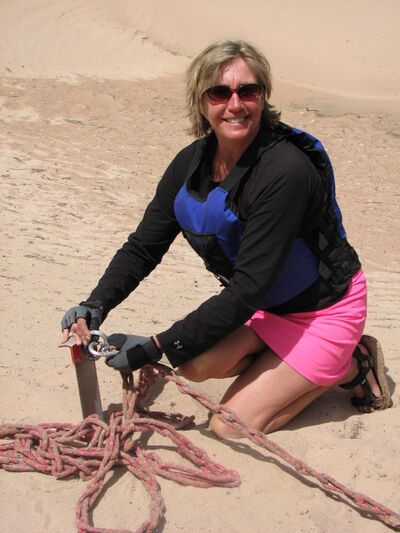Bow-line Safety: Difference between revisions
(Created page with "ow-line Safety 500px|right One of the important things to do on a river trip is to be sure your boat is securely tied to shore when no one is in the boat. These boats tied up at the popular Havasu pull-in are tying up to the rocky cliff behind the camera. These bow lines are a real hazard for people walking on the shore past these boats. Try to keep your bow line tied low to the ground to decrease the potential for someone to st...") |
No edit summary |
||
| Line 1: | Line 1: | ||
Bow-line Safety | |||
[[Image:Down the bow line 9-05.jpg|500px|right]] | [[Image:Down the bow line 9-05.jpg|500px|right]] | ||
Latest revision as of 08:43, 30 December 2022
Bow-line Safety
One of the important things to do on a river trip is to be sure your boat is securely tied to shore when no one is in the boat.
These boats tied up at the popular Havasu pull-in are tying up to the rocky cliff behind the camera. These bow lines are a real hazard for people walking on the shore past these boats.
Try to keep your bow line tied low to the ground to decrease the potential for someone to stumble over your line.
There's a great website for learning how to tie some basic knots here:
These boats are all tied frame to frame for the night, with two bowlines tied off downstream and one line tied off upstream. Some boat owners do not want other boats tied to their boat at camp, so if it's not your boat, better ask the person who is rowing the boat if they care.
When you are traveling downstream, you want to keep your bowline wrapped up and out of the water. Here's one of many ways to do this. If you don't know what to do with your bowline, ask someone.
When one boat is positioned by itself, for safety sake you might want to consider two lines to shore tied to the boat in two different places as is pictured here.
Some folks prefer to use a sand stake. This is a long piece of aluminum angle driven into the sand with a small hammer or a sandaled foot. The bow line is then attached to the sand stake. (Thanks to Scott Coultas for this photo).
Jay "Gonzo" Meierdierck notes there are other options to a rope bow line.
Jay uses a rope with a chain loop knot. Meri is demonstrating it here. It can be easily extended, very easily wrapped around a rock, tree, or other device, and connected back to itself with a carabiner.
Jay also carries as a spare long nylon webbing line. This one has a "seat-belt" type arrangement that can be lengthen or shortened easily.
If your boat or boats float away, you will have to go downstream to retrieve it or them. If all your boats have gone downstream, pack up your gear by the river's edge and wait for the next trip that comes along. See if they are willing to load all your gear on their boats and float you crew downstream to look for your boats. Your boats may be an eddy, or the next trip downstream may have seen them and tied them to shore. Here is a short YouTube clip of runaway boats leaving the Phantom Ranch area from March 31, 2015.
Click here to return to the On The Water page.
Click here to return to The Trip page.
